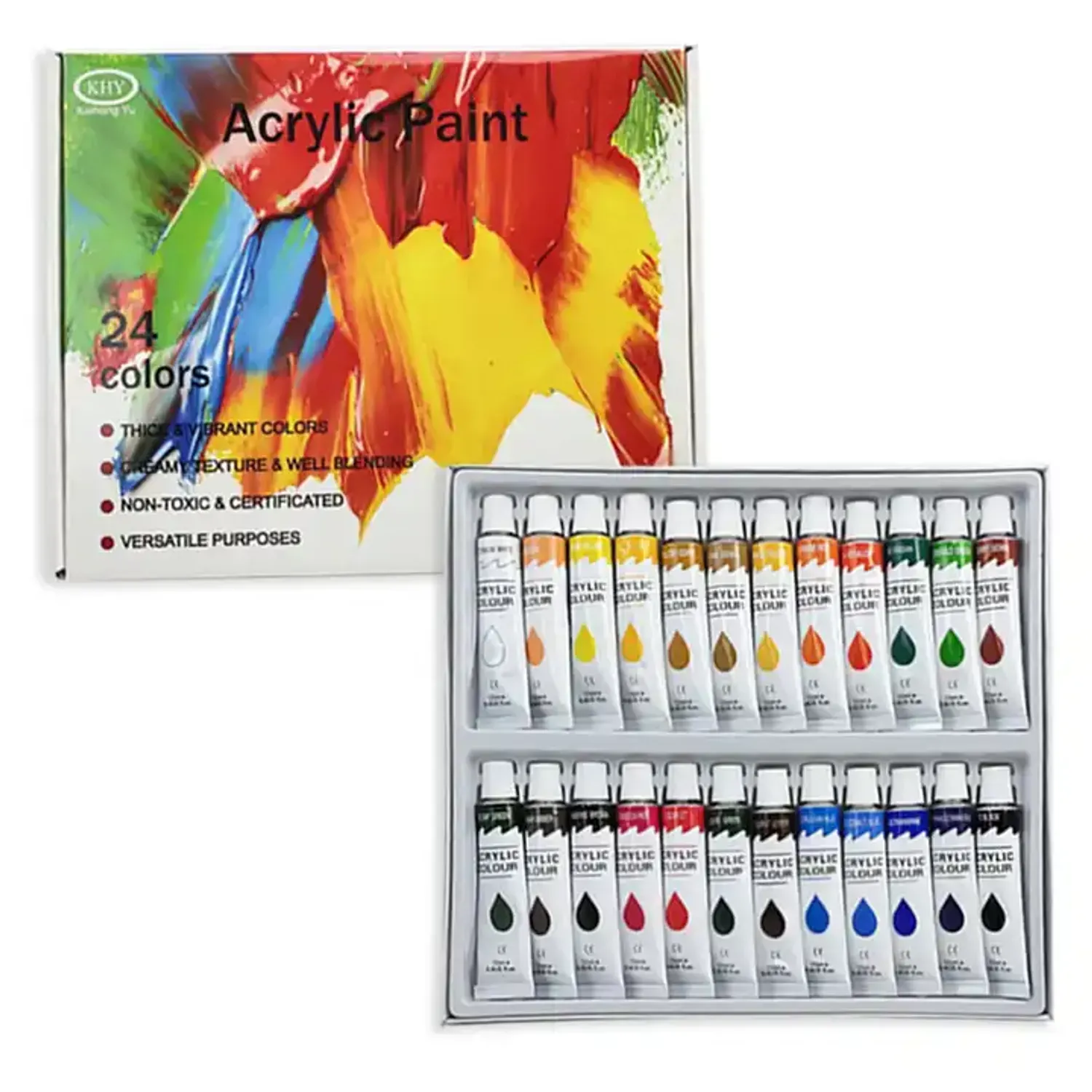betty@kaihong888.com

Get A Quote
What Is the Proper Way to Dispose of Acrylic Paint Water?
Never Pour Acrylic Paint Water Down the Sink
Acrylic paint water contains chemicals and pigments that can harm the environment if poured down the sink. When acrylic paint water enters the drainage system, it can lead to blockages and damage, posing a threat to waterways and wildlife.
Environmental Hazards
Pouring acrylic paint water down the drain introduces toxins into the water supply, contaminating aquatic ecosystems and endangering aquatic life. Additionally, the paint residues can accumulate in pipes, causing clogs and plumbing issues. Over time, this improper disposal method can contribute to environmental degradation and pollution.
Alternative Disposal Methods
To avoid these environmental hazards, consider alternative disposal methods for acrylic paint water. One effective approach is to use absorbent materials such as cat litter. By pouring the paint water into a container filled with cat litter, the litter absorbs the liquid, allowing for safe disposal once the mixture solidifies. This method prevents the paint water from reaching the drainage system and minimizes environmental impact.
Another option is to collect acrylic paint water in containers designated for proper disposal. Instead of pouring it down the sink, store the paint water in sealed containers until it can be disposed of safely. This ensures that the paint water is contained and prevents it from contaminating the environment.
By adopting these alternative disposal methods, artists can protect the environment while responsibly managing acrylic paint water waste.
Recycle Acrylic Paint Water at Waste Facilities
Acrylic paint water can be recycled at waste facilities, offering an eco-friendly solution to disposal.
Recycling Process
At waste facilities, acrylic paint water undergoes a recycling process where it is treated to remove impurities and contaminants. Once purified, the water can be reused or safely discharged into the environment, minimizing waste and preserving natural resources.
Local Regulations
It's essential to check local regulations regarding recycling options for acrylic paint water. Each area may have specific guidelines and procedures for recycling paint-related waste. By familiarizing yourself with these regulations, you can ensure compliance and contribute to responsible waste management practices.
Environmental Benefits
Recycling acrylic paint water offers numerous environmental benefits. By diverting paint waste from landfills and waterways, recycling helps reduce pollution and conserve valuable resources. Additionally, recycling reduces the need for new water sources, promoting sustainability and environmental stewardship.
By recycling acrylic paint water at waste facilities, artists can play a significant role in preserving the environment and promoting a more sustainable future.
Soak Brushes and Tools Before Disposal
Proper disposal of acrylic paint water includes soaking brushes and tools to prevent paint residue from hardening in drains.
Importance of Soaking
Soaking brushes and tools before disposal helps prevent acrylic paint water from drying and causing blockages in drainage systems. By allowing the paint to soften and dissolve in water, it becomes easier to clean and dispose of without risking plumbing issues.
Steps for Effective Soaking
- Use of Buckets or Containers: Fill a bucket or container with water and immerse the used brushes and tools. Ensure that the water completely covers the paint-covered parts to facilitate the softening process.
- Proper Disposal Methods: After soaking, dispose of the water responsibly to prevent environmental contamination. Avoid pouring it down the drain and instead opt for alternative disposal methods, such as using absorbent materials or recycling at waste facilities.
Use Only Necessary Amounts of Acrylic Paint
Minimizing waste starts with using only the necessary amount of acrylic paint for your projects.
Minimizing Waste
Using excessive amounts of paint contributes to unnecessary waste and environmental impact. By estimating the required amount accurately, artists can reduce paint consumption and minimize leftover residues.
Tips for Estimating Paint Usage
- Squeezing Out Small Amounts: Instead of squeezing out large quantities of paint onto palettes, start with small amounts and add more as needed. This approach prevents overuse and reduces the likelihood of leftover paint.
- Storing Leftover Paint: Properly store leftover paint for future use by sealing it in airtight containers or covering palettes with cling film to prevent drying. This way, artists can extend the lifespan of their paint and minimize waste.
By adopting these practices, artists can contribute to environmental sustainability while maintaining their creative endeavors.
Reuse and Repurpose Leftover Paint Water
Reusing leftover paint water is a sustainable practice that minimizes waste and maximizes creativity.
Importance of Reuse
Reusing leftover paint water not only reduces environmental impact but also saves resources and promotes sustainable art practices. By finding innovative ways to repurpose paint water, artists can minimize waste and enhance their creative process.
Creative Reuse Ideas
- Underpainting or Experimentation: Utilize leftover paint water for underpainting or experimentation purposes. The diluted paint can create unique effects and textures, adding depth and dimension to your artwork. Experiment with different techniques and applications to discover new possibilities.
- Incorporating into New Projects: Incorporate leftover paint water into new art projects or techniques. Blend it with fresh paint to create custom colors or use it as a wash for background layers. By integrating recycled paint water into your artwork, you can infuse your pieces with sustainability and originality.
By embracing the concept of reuse and repurposing, artists can transform leftover paint water into valuable resources for their artistic endeavors.
Conclusion
Adopting responsible practices for disposing of acrylic paint water not only safeguards the environment but also fosters sustainable creativity. By following the outlined methods, artists can minimize waste and make a positive impact on the planet while pursuing their artistic passions.
As you embark on your artistic journey, consider investing in a high-quality acrylic paint set from KHY. With a customized acrylic paint kit, you can elevate your artistic talent and unlock endless possibilities. Whether you're a seasoned artist or just starting out, KHY's acrylic paint sets offer premium quality and versatility to bring your creative visions to life. Your artistic journey awaits, and with the right tools at your disposal, the possibilities are limitless.

